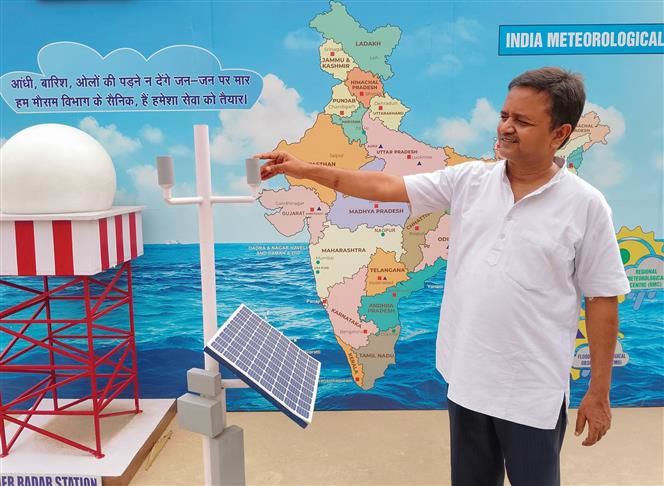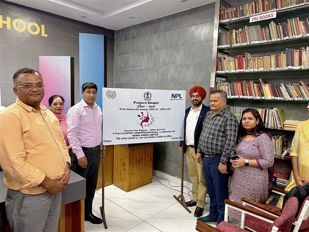
AK Singh, Director, Chandigarh Meteorological Department, explains a model in Sector 39. Tribune photo: Pradeep Tewari
Sandeep Rana
Chandigarh, July 1
The Chandigarh Meteorological Department has attributed inaccurate predictions to fund crunch preventing the establishment of surface observatories in every district of Punjab and Haryana.
These observatories provide specific data that is essential for making accurate weather forecasts. At present, surface observatories are available in a few districts, including Patiala, Ludhiana and Amritsar in Punjab; and in Ambala, Hisar and Karnal in Haryana. The lone observatory of the city is located in Sector 39.
10-15% forecasts may prove wrong
While 85-90% predictions are accurate, 10-15% may be incorrect due to the probabilistic nature of this science. The establishment of surface observatories in every district will enhance forecast accuracy, Chandigarh including where a facility already exists,” said AK Singh, Director, Chandigarh Weather Department, which releases forecast for the city, Punjab and Haryana.
Despite surface observatories in some areas, predictions for these areas still go wrong frequently.
“While 85-90% predictions are accurate, 10-15% may be incorrect due to the probabilistic nature of this science. The establishment of surface observatories in every district will enhance forecast accuracy, Chandigarh including where a facility already exists,” said AK Singh, Director, Chandigarh Weather Department, which releases forecast for the city, Punjab and Haryana.
He, however, said to improve predictions, the department now has an automatic weather system, which has reduced data intervals from three hours to 15 minutes. Other than surface observatory parameters (temperature, pressure, humidity, wind direction, wind speed and clouds), various aspects such as upper air observation network analysis (up to 35-40 km), weather balloons, pan-India radars, ISRO satellite data and global free weather data exchange are also significant in making weather predictions.
AK Singh said forecasts or alerts are made based on the analysed data and models. The alerts are issued for conditions such as heavy rainfall or heatwave keeping the public in mind.
Monsoon arrives in city
Monsoon has officially arrived in Chandigarh. “With the late evening rain, monsoon has arrived here. For the next five days, we expect a good rainfall. Overall, this is likely to be a good monsoon season,” added AK Singh.
In the past 24 hours — from 8:30 am on June 30 to 8:30 am on July 1 — 21.6 mm rainfall was recorded in Chandigarh. It has also provided some relief from heat, though humidity increased today. The maximum temperature was 35.6°C, which is the normal day temperature.
Join Whatsapp Channel of The Tribune for latest updates.




























